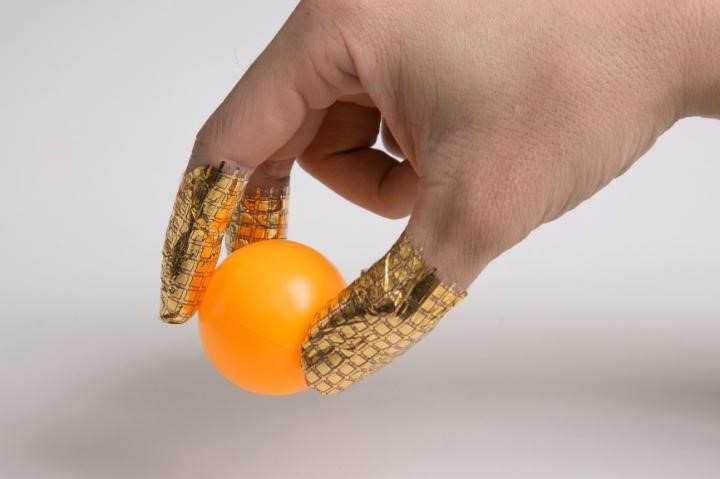Among the numerous categories in the evolving field of newly synthesized nanomaterials, carbon nanotubes (CNTs) are perhaps among the most dynamic and undergoing the most rapid pace of development. The past 15 years have witnessed relentless growth in the research, development, and technological understanding of these remarkable materials.
Earlier this year, an international team of researchers developed a nanofiber-type pressure sensor that can measure pressure distribution of rounded surfaces such as an inflated balloon while maintaining its sensing accuracy even when bent over a radius of 80 micrometers, equal to twice the width of a human hair. The sensor, about eight micrometers thick, can measure the pressure in 144 locations simultaneously.
This unique development of a pressure-sensitive sensor using nanomaterial may one day allow healthcare practitioners to physically screen for breast cancer using the pressure-sensitive rubber gloves to detect tumors.
WHAT ARE CNTS?
In their simplest form, CNTs represent seamless cylinders of graphene film with diameters close to only 1 nanometer (nm). As such, they exhibit an unprecedented range of properties singularly unequaled by any other nanomaterials.
according to BCC Research analyst John Oliver.
He explains that a CNT can be considered to be formed by rolling a single layer of graphite—called a graphene sheet—into a seamless cylinder usually capped at either end with two halves of a C60 buckminsterfullerene molecule—the predecessor to CNTs. More precisely, he says, the molecular structure of these cylinders uniquely comprises hexagonal and pentagonal arrangements of carbon atoms. In practice, these rolled structures are arranged helically around the cylinder in what is known as a chiral structure—since they can exist in two mirror-related forms. Depending on this helicity or chiral angle, CNTs can be either conductive or semiconductive.
These CNTs offer, among many other unusual properties, exceptional mechanical strength and flexibility and high electrical and high thermal conductivity. Since their discovery in 1991, the unique combination of properties of these materials has aroused much excitement in the research community and equally in industry due to their potential for a broad range of new
applications
A FLEXIBLE AND TRANSPARENT PRESSURE SENSOR
According to Dr. Sungwon Lee and Professor Takao Someya of the University of Tokyo's Graduate School of Engineering, conventional pressure sensors are flexible enough to fit to soft surfaces such as human skin, but they can’t measure pressure changes accurately once they are twisted or wrinkled, making them unsuitable for use on complex and moving surfaces. Also, it’s difficult to reduce them below 100 micrometers thickness because of limitations in current production methods.
The study, conducted in collaboration with the research group of Professor Zhigang Suo at Harvard University, demonstrated a pressure-sensitive device consisting of organic transistors, electronic switches made from carbon and oxygen based organic materials, and a pressure sensitive nanofiber structure. Carbon nanotubes and graphene were added to an elastic polymer to create nanofibers with a diameter of 300 to 700 nanometers, which were then entangled with each other to form a transparent, thin and light porous structure, Lee explains.
"We've also tested the performance of our pressure sensor with an artificial blood vessel and found that it could detect small pressure changes and speed of pressure propagation," he says.
"Flexible electronics have great potential for implantable and wearable devices. I realized that many groups are developing flexible sensors that can measure pressure but none of them are suitable for measuring real objects since they are sensitive to distortion. That was my main motivation and I think we have proposed an effective solution to this problem."
The global market for CNT primary grades was $158.6 million in 2014. This market is projected to reach $167.9 million in 2015 and $670.6 million in 2019, with a compound annual growth rate (CAGR) of 33.4% from 2014 to 2019.
Universities, small businesses, and start-ups, as well as large corporations, have continued to probe and exploit numerous commercial possibilities for these fascinating materials. As a result, the list of product applications is expanding considerably and is projected to do so well into the future, says Oliver.




